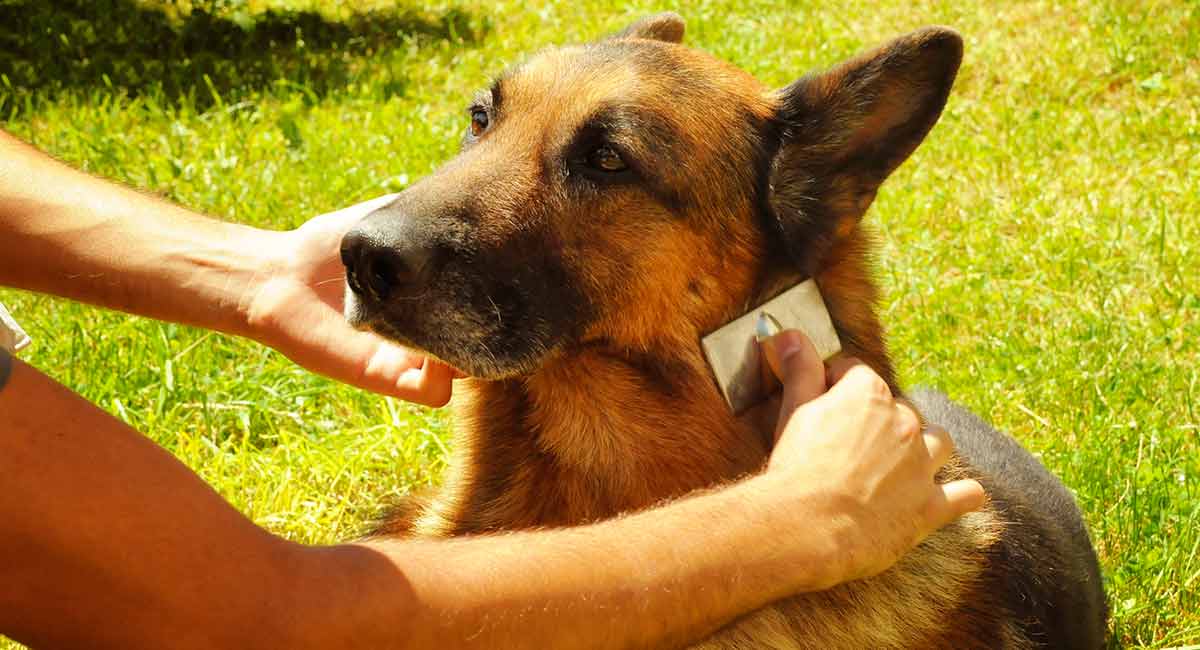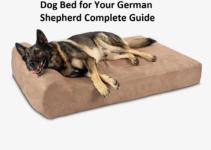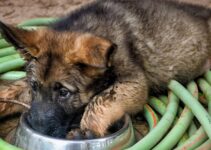Do you want to take better care of your German Shepherd’s coat but don’t know where to start? Brushing is a key part of any regular grooming routine, yet it can be tricky to get it right.
This guide will show you how to brush your pet’s coat like an expert – and give them a wonderful experience in the process. You can start giving your furry best friend the love and attention they deserve today!
Introduction: Most German Shepherds require regular daily brushing to keep their coats free of debris, mats and tangles, as well as aiding in skin care. Additionally, regular grooming can help strengthen the bond between you and your pet, provide opportunities for physical examinations and promote healthy hygiene for both you and your German Shepherd.
In this guide, we will walk you through everything you need to know about brushing your beloved companion.
Briefly introduce the importance of brushing a German Shepherd
Regular brushing is an important way to help keep your German Shepherd healthy. Regular brushing can help distribute natural skin oil throughout the coat, prevent mats and knots from forming, and remove dirt and debris. It’s also a great opportunity to inspect your dog’s skin for any parasites or injuries. Brushing can also be a great bonding opportunity between you and your four-legged friend.
In order to keep your German Shepherd in top shape, it’s important to brush them regularly according to their unique needs. Follow this step-by-step guide for the best way of brushing your German Shepherd.

Explain the benefits of regular brushing for your dog’s health and appearance
Regular brushing is essential for maintaining your German Shepherd’s health and appearance. Brushing your dog daily can help remove dead hair, dirt, and debris while bringing out the natural shine of their coat. With the right tools, it’s a straightforward process that’s not just beneficial for their health—it also helps build a strong bond with your pup.
Brushing your German Shepherd can ward off parasites like fleas and ticks as well as reduce the presence of allergens that may trigger an allergic reaction in humans. It also helps distribute natural oils throughout their fur, making it softer and less likely to tangle or mat. Additionally, regular brushing stimulates circulation in the skin, helping to promote a healthy coat by eliminating any dirt and debris trapped between the fur and skin.
When combined with regular trips to the groomer for trims and baths, regular brushing can help keep your pet looking neat. While it may take occasional extra effort on your part to rid them of pesky knots, you’ll soon start noticing fewer stray hairs around the house due to improved fur management from routine brushing. Just remember that proper care goes beyond shampooing every few weeks—regular brushing should be part of your grooming routine for optimal results!
Choosing the right brush
Choosing the right brush for your German Shepherd is an important step in the brushing process. Not all brushes are suitable for each type of coat or skin, and some brushes are better for different parts of your dog’s body. Here are some tips for choosing the best brush for your German Shepherd:
- Short-haired dogs – use a slicker brush (with bent wires) or a rubber grooming mitten to prevent the development of mats and tangles.
- Long-haired dogs – use a pin brush (with straight wires) to help keep coat items from becoming entwined or tangled.
- Thick/dense coats – use a slicker brush, with either thin wire teeth or rubber heads to effectively detangle thicker sections of fur.
- Sensitive skin – choose natural bristle brushes that gently move through hair without causing irritation or discomfort on sensitive areas. For example, boar bristle is long-lasting and dense enough to go through thick fur without snagging. It’s also gentle enough not to hurt delicate skin when used correctly. Additionally, there are grooming gloves available purchase that can be used during brushing sessions if desired.
Make sure to only use products made specifically for dogs in order to avoid potential health risks associated with human products! A correctly sized, quality brush will be able to penetrate the dog’s coat more easily and will cause less discomfort overall during brushing sessions.
Discuss the different types of brushes available for German Shepherds
German Shepherds have unique coat needs that require special brushes. They have a double-layered coat which is characterized by thick, dense fur ranging from short to medium in length. Their furry coats are not only beautiful but also soft to the touch and surprisingly low maintenance. The more often you brush your dog, the less time consuming it will be overall. Whether you’re taking care of a pup for the first time, or an old-timer with years of experience, choosing the right brush can make all the difference on grooming days. Here’s a look at some of the options available:
Slicker Brushes: Slicker brushes are best for German Shepherds because they effectively remove loose undercoat fur while being gentle on your pup’s skin. Look for ones with curved metal pins that distribute pressure evenly throughout each stroke to prevent matting and reduce pulling at fur.
Bristle Brushes: Bristle brushes work well on thicker areas like the back and hindquarters and are good after using a slicker brush to help soften and distribute oils through their coat before going outside. Choose one with natural bristles which helps massage your pup’s skin for added shine and slickness throughout their coat.
Rakes: Rakes are great for removing mats from long coats as some German Shepherds have coats that grow quite dense if they are not properly groomed regularly. Choose rakes with wide teeth that can be adjusted easily depending on your dog’s individual needs at any given moment—since different areas may require different lengths of strokes to dislodge mats without too much strain or discomfort on your pup’s part!
Pin Brush: Pin brushes work well when it comes time to fluff up longer hair in certain areas like around their face or chest area after using other brushing tools first (slicker brush or rake). Look for one with sturdy pins made out of metal that won’t break easily so you can enjoy quality grooming sessions without having constantly replace them each time one gets worn out too quickly!
Provide guidance on which brush is suitable for different coat types
It is important to use the appropriate brush for your German shepherd’s coat type. Knowing which type of coat your GSD has will help you choose the right brush, as each type requires a different groom.
Smooth Coat German Shepherds
Smooth coat German shepherds, also known as shorthaired dogs, have very short fur and are not prone to excessive shedding compared to other GSDS’s. A soft bristle brush with natural or synthetic bristles will do the trick for this breed’s short hair. It’s important not to press too hard against their skin, as this could cause irritation.
Rough Coat German Shepherds
Rough coated German shepherds may have thick, wiry hair that requires a stiffer brush than what is needed for smooth coated dogs. Look for a medium-bristle wire brush with pins that are spaced out wider than on softer models – this helps penetrate deep into the longer fur and reduce matting and tangling. You’ll also need a comb for extra tangles and mats– use gently at first to ensure you don’t pull or break any hairs.
Long Haired German Shepherds
Long haired German shepherds have especially dense fur, which makes them seem fluffy and thick in appearance. The most suitable brushes for long-haired GSDs are bait brushes or long-pin slicker brushes – these styles have wide heads that can help detangle knots without snagging the skin or breaking any hair follicles.. To help ensure an even groom, start at the neck and work your way back towards the tail end of your pup– scooping up any dirt in their fur along the way! Finally, make sure to use a comb afterward –to capture smaller knots and debris left over from brushing–before you finish off with detangling spray if necessary.
III. Preparing your German Shepherd for brushing
Before you begin brushing your German Shepherd, there are several steps you will need to take to ensure a successful session.
First, have the right materials and tools on hand. You will need a shampoo and conditioner formulated specifically for a German Shepherd. Additionally, have brushes and combs of different sizes and textures in order to accommodate the thick and coarse hair of this breed. You may also find pet wipes and pet cologne helpful when grooming your German Shepherd.
Second, begin by giving your furry friend a bath with lukewarm water. Gently massage the shampoo from head to tail as it is important for getting rid of dirt particles that can get stuck in your dog’s hair coat during brushing sessions. Then, apply conditioner from ears down to ensure all Germen Shepherds fur is properly nourished following each bath session. Rinse thoroughly afterward with warm water until no trace of shampoo remains on their skin or fur.
Third, dry off the dog with either a towel or blow dryer set on cool (or lowest setting) while running your fingers through its fur coat until it’s completely damp-free or slightly damp at most. This step is essential before brushing as wet fur can easily tangle again making it difficult for our next steps in grooming our canine companion!
Explain the importance of getting your dog used to being brushed
Regular brushing is an essential part of your German Shepherd’s grooming routine. Brushing helps to remove dirt and debris from the fur, and it also helps to keep the coat looking smooth and healthy. Regular brushing prevents tangles and matting, which can be uncomfortable or even painful for your dog.
It is important to start developing a good brushing habit with your German Shepherd at an early age, as this will make grooming easier in the future. Before you begin brushing your dog, take the time to get them used to the process. Start by gently running a brush over their body and then gradually build up on how often you brush them. Reward them with treats occasionally as a way of encouraging them throughout the process. This will help ensure that your German Shepherd remains calm during brushing sessions in the future.

Provide tips on how to make the brushing experience enjoyable for your dog
German Shepherds are intelligent and loyal, medium-large working dogs with thick and dense coats. Routine brushing is essential in order to prevent the fur from matting, while also promoting healthy coat growth. Brushing is a great way of spending quality time with your dog, and the more often you brush them, the easier it becomes for you both. Below are some tips to make brushing your German Shepherd an enjoyable experience for both of you:
- Before brushing, always make sure that your German Shepherd’s coat is clean and free of any dirt or dust. A pre-brushing bath can help wash away any tangles in the hair before brushing begins.
- Introduce your dog to brushes slowly, speaking in an encouraging tone while grooming them to help reduce their anxiety. Most German Shepherds will respond better to metal or bristle brushes as opposed to plastic or rubber ones.
- Choose a time when your dog is less active and consider breaking up the brushing session into several short sessions throughout the day rather than trying to do it all at once. This will prevent them from getting bored or overstimulated with too much attention at once.
- Give lots of praise during the grooming process, offering treats as rewards for good behavior. This will encourage them to look forward to grooming times in the future!
- Spend time inspecting their coat for any signs of fleas, parasites or skin infections which may warrant a trip to the vet as soon as possible. This should be done no matter how often they get brushed – but especially after they’ve had a bath so that you can make sure everything’s okay!
Step-by-Step Guide to brushing your German Shepherd
Brushing your German Shepherd regularly is an essential part of keeping their coat clean and healthy. Here are the steps you need to follow to keep your dog looking and feeling their best:
- Before You Start: Make sure you have all the necessary supplies on hand before beginning the brushing process. This includes a quality brush specifically designed for longer-haired dogs, as well as a detangling comb, slicker brush and deshedding tool (if needed).
- Preparing Your Dog: Begin by lightly running your hands through your German Shepherd’s coat to check for any matting or knots that need to be addressed first. If you discover any, use your fingers or a comb to gently break them apart before beginning the brushing process. Additionally, if your dog has a significant undercoat, you may also want to use a deshedding tool prior to brushing in order to reduce shedding and make the job easier.
- Starting With The Brush: Using gentle strokes with the brush, begin at the head and move in downward strokes along with your dog’s hair growth direction until reaching their tail area. Stop periodically to check for any more mats or tangles that may require more attention with either your fingers or detangling comb before continuing on with the brushing process.
- Working With The Comb: After brushing out most of the tangles and debris, use a wide-tooth comb along with downward strokes in order ensure every part of their coat has been detangled and brushed properly. Concentrate extra on areas near ears legsas well as near hindquarters as these areas can easily accumulate matted fur if left untended too long.
- Final Touches: To add additional shine and remove any remaining dead fur from beneath the coat, finish off by using brief strokes from a slicker brush against fur growth direction.
- Cleaning Tools: When you’re finished brushing out all debris from his coat ,make sure to wash off all tools used aswell as vacuum up excess debris such as hair from furniture or floor surfaces.
Discuss the importance of brushing in sections
Brushing your German Shepherd’s coat is an important part of keeping your pet healthy and happy. Regular brushing reduces shedding, removes debris, removes mats and tangles, stimulates the skin, redistributes natural oils for a glossy coat, and even helps detect any lumps or bad spots. All of these benefits make it important to brush your pet’s coat at least three times a week.
It is recommended that when brushing your German Shepherd’s coat start with the head and work down to the tail. Brush in sections so that you can focus on each area carefully and pay attention to hard-to-brush knots or hidden mats in fur. To help separate sections use fingers as a guide; stroke them through the hairs will help position some of the fur so it’s easier to brush out. Make sure you are not pulling on any knots as this will cause pain on your pet.
It is also important to use grooming tools that are suited for German Shepherds specifically like slicker brushes which are good for medium-haired breeds like German Shepherds because they help untangle heavy mats without damaging the fur or skin underneath; steel combs which have finer teeth on one end and leave hair looking smoother; dematting rakes which are great for getting deep into thick undercoats; undercoat rakes which specifically help with thick sheddy coats; mat splitters/seeders used to gently remove tough mats by cutting them into smaller sections; curved scissors should be used with caution since trimming hair around legs, tails faces must be done carefully as not to cut too deeply into the skin; small thinning shears should only be handled by trained professionals who know how best to thin long locks throughout German Shepherds heavy coats without shaving a bald spot!
Provide instructions on how to brush different areas of your dog, including ears, tail, and belly
Brushing your German Shepherd is a great way to maintain their coat and keep them looking and feeling their best. While it’s best if you brush your dog daily, it’s important to start slow and work with your dog, teaching them to accept the brushing. Here is a step-by-step guide on how to brush your German Shepherd.
Ears: Start by using a soft baby toothbrush or cotton swab dipped in ear cleaning solution for the outside of the ears. Make sure that you keep any foreign objects away from the ear canal, as this can cause irritation or injury. After brushing the outside of the ears, carefully use a damp cloth to wipe away any dirt or debris that has been brushed off.
Tail: Gently brush down your German Shepherd’s tail starting at the top near their body and working downwards toward the tip of their tail. Be sure to go slowly around any sensitive areas like joints as these areas can be easily irritated when pressed too hard with a brush or comb. If there are any knots in their fur, carefully wet them with water and use a metal comb to gently work through them until they come apart on their own without pulling too hard on their fur.
Belly: Start at your German Shepherd’s chest area before moving towards the underside of his belly. Use light pressure with your brush so that you don’t irritate his skin while you brush away dirt and debris from his fur. If needed, use a damp cloth to help lift some of the deeper dirt out of his coat before brushing it away completely with your brush.

Conclusion
Brushing your German Shepherd on a regular basis is an essential part of any dog grooming routine. This type of coat requires the use of gentle yet effective brushes that have been specifically designed for the thick fur of a German Shepherd. With so many different styles and types of brushes to choose from, you may feel overwhelmed with the selection.
To make sure you get the most out of brushing your German Shepherd’s coat, familiarize yourself with all types and select one that works best for you and your pet. Additionally, pay attention to brushing frequency and technique to ensure your four-legged friend is getting the most out of each brush session.
Finally, remember to give plenty of love and affection before, during and after the process so that both you and your puppy can enjoy this quality time together!
FAQ
How much should I brush my German Shepherd?
You should brush your German Shepherd at least once a week.
Do German Shepherds like being brushed?
Most German Shepherds enjoy being brushed, especially if it’s done gently.
When should I start brushing my German Shepherd?
You should start brushing your German Shepherd as soon as possible, ideally when they are still a puppy.
What is the proper dog brushing technique?
The proper dog brushing technique involves brushing in the direction of the hair growth, using gentle strokes and avoiding sensitive areas.
Should I brush my dog wet or dry?
It’s best to brush your dog when they are dry, as wet hair can be more prone to damage and tangling.
Which dog brush to use first?
You should use a slicker brush first to remove any tangles or mats, and then follow up with a bristle brush to smooth the coat.
What’s the best way to brush a German Shepherd?
The best way to brush a German Shepherd is to start at the head and work your way down the body, using gentle strokes and paying attention to any tangles or mats.
What type of brush is best for German Shepherd?
A slicker brush and a bristle brush are both good options for brushing a German Shepherd.
What happens if I don’t brush my German Shepherd?
If you don’t brush your German Shepherd regularly, their coat can become matted and tangled, which can lead to skin irritation and other health problems.
Can I brush my dog once a day?
Yes, you can brush your dog once a day, but it’s not necessary unless they have a particularly long or thick coat.
See Also :
- Best crates for german shepherds 2023
- Best collar for a german shepherd 2023
- Best brush for german shepherd 2023
- Best shampoo for german shepherds 2023
- Best puppy food for german shepherd 2023


